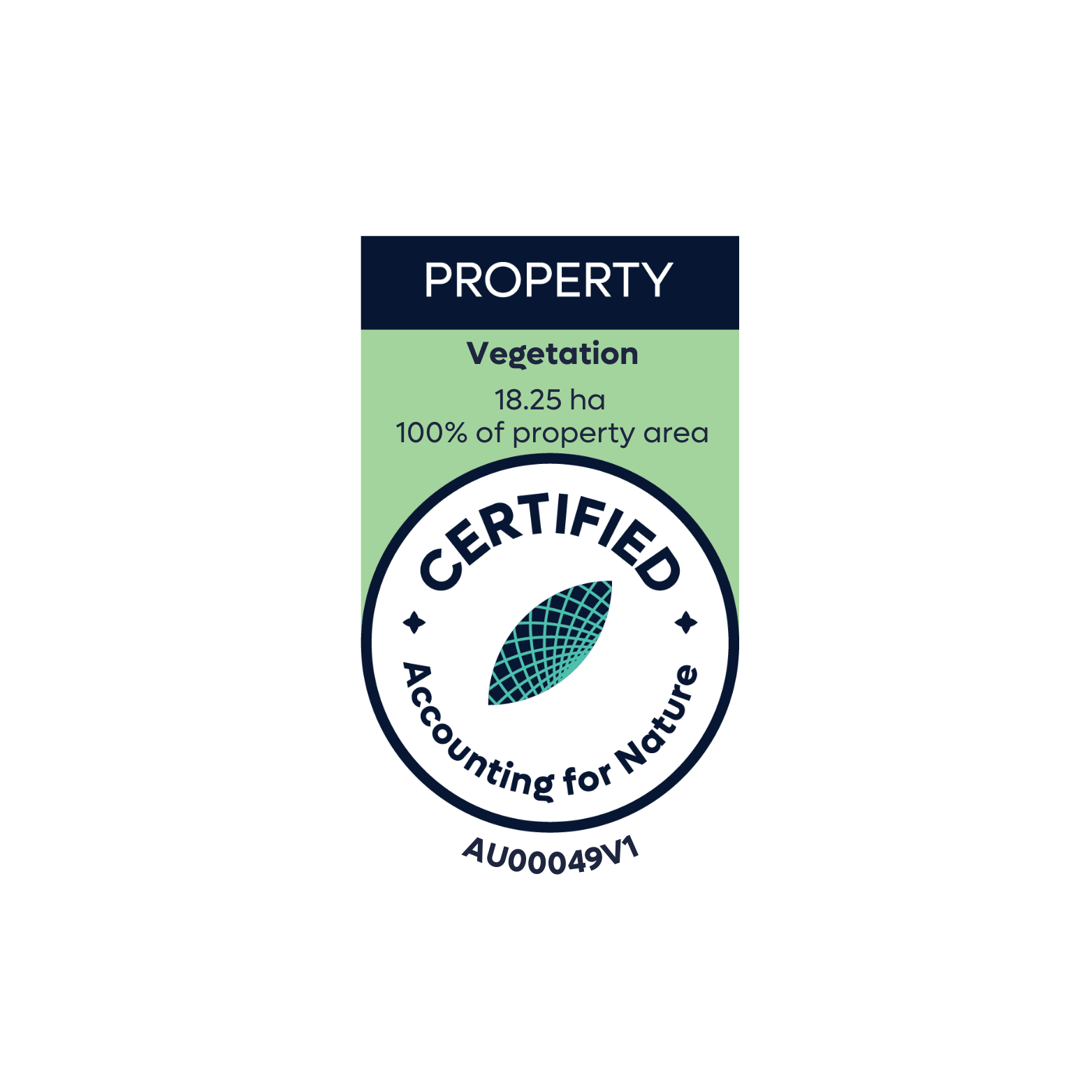Cloverdale Farm Natural Capital.
Native Vegetation Asset Account.
Environmental Account ID: AU00049
Environmental Assets: Native Vegetation
Asset Account ID: AU00049V1
Registration date: 14 September 2022
Certification date: 22 January 2025
Certification pathway: AfN Verified
Purpose: To measure current condition and track change over time to better inform land management options for improving biodiversity and soil health.
Current land use: Conservation and Grazing
Area: 18.25 ha
Method: AfN-METHOD-NV-06
Asset Account snapshot.
Asset summary - baseline.
Asset statement.
-
14 September 2022 - Registration date
-
22 January 2025- Certification date
Significant outcomes
The non-grazing Assessment Units demonstrate relatively high Econd® scores, which reduce as the account progresses to Sub-asset and asset scores. This is due to the aggregation of grazing Assessment Units which have an assumed score of 0/100 and account for 76% of the property. The grazing land comprises exotic pasture species and would not score highly for the effort involved in conducting field assessments. Native vegetation (not used for grazing) covers 22% of the property which is in line with Landcare best practice.
In general, farms in southern Victoria are much smaller than rangeland farms and have undergone significant land clearing. As such, the weighting of site context has a larger bearing on scoring when considering remnant vegetation across a 1km radius. This means that neighbouring farms and landscapes can have greater influence on an account which is outside the control of the farm with an Environmental Account.
Tree canopy cover is outside the benchmark in both EVC16 and EVC30 NV Assessment Units and sub-canopy is outside range for EVC16 as well. There is little intervention that can be done to bring these within range (other than thinning), however, over time, the vegetation may implement its own self-organisation and naturally thin out. There is a high level of non-native plant cover as we find in most small farms with exotic adjacent pastures. With revegetation fenced out from grazing, these grasses are not consumed by livestock or native fauna as a management option. Similarly, with cleared land and historical grazing practices, there is limited native grass seedbank to allow native grass regeneration. Adding in some graminoids and managing non-native grasses in the EVC 16 revegetation AU is the main management consideration.
Disclousres & limitations
One of the key limitations in our southern Victorian landscape is the smaller farm sizes, hence many re-vegetation projects are smaller in scale. The smaller property size in Victoria means that site context can impact Econd® scores as a 1km configuration extends into neighbouring properties and land use, the historical and current land use for these vastly influences the extent of remnant native vegetation in a landscape.
In Victoria, we have no reference benchmark for sub-canopy height and this has been scored as N/A, however as the NV Sub-assets include a sub-canopy cover indicator with a reference benchmark, we plan to seek expert opinion in future to assist with the development of a reference benchmark to enable sub-canopy height to be included in future sampling. As this account was developed through (12 month) grant funding, there was no funding allocation to enable unanticipated expert opinion where needed. This will be possible where we have time and an expert available to consider how we could develop a benchmark for sub-canopy height.

Other Environmental Assets.
Learn more about other Environmental Assets in this Environmental Account.







